Homegrown Chinese CPUs are catching up to AMD and Intel — Loongson 3B6600 and 3B7000 allegedly match Intel 10th Gen CPU performance
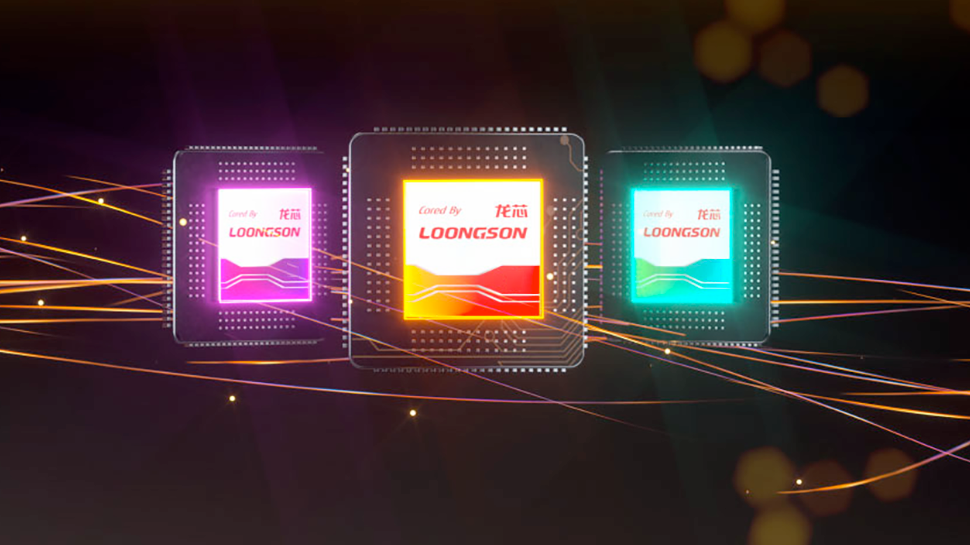
- Oops!Something went wrong.Please try again later.
Zhang Ge, the CEO of Loongson, revealed the company's next-generation octa-core 3B6600 and 3B7000 CPUs for the Chinese market. Both these CPUs are made for the mainstream market, emphasizing single-core performance rather than multi-core.
Loongson admitted that while the 3B6600 and 3B7000 are behind the competition in multi-core performance, the company has significantly closed the gap in single-core performance. Loongson claims a 20X uplift compared to the company's previous processors. We've already seen the 3A6000 in action, exhibiting a similar IPC level close to AMD's Zen 4 and Intel's Raptor Lake.
The 3B6600 features eight LA854 CPU cores and an LG200 on-chip graphics core clocked at 3.0 GHz. The 3B7000 CPU also has eight LA864 cores clocked with 3.5 GHz, but it doesn't mention its iGPU.
Based on the information provided by the company, the 3B7000 supports PCIe 4.0, SATA III, USB 3.0, GMAC, and HDMI output. It also has integrated INT8 Tensor accelerators for LLM workloads. It also supports OpenCL 3.0 computing and OpenGL 4.0 graphics acceleration. Its on-chip graphics can get up to 256 GFLOPs of computing performance, and with a discrete graphics solution, it can achieve up to 1TFlops. There's no other information left, but the mini PC with the 3A6000 CPU only supported 4K at 30Hz. Hence, there's a possibility that this iGPU will lack some functions and support. Interestingly, it seems to support multiple RAM interfaces such as SRAM, SDRAM, DDR2, and DDR3, followed by DDR4.
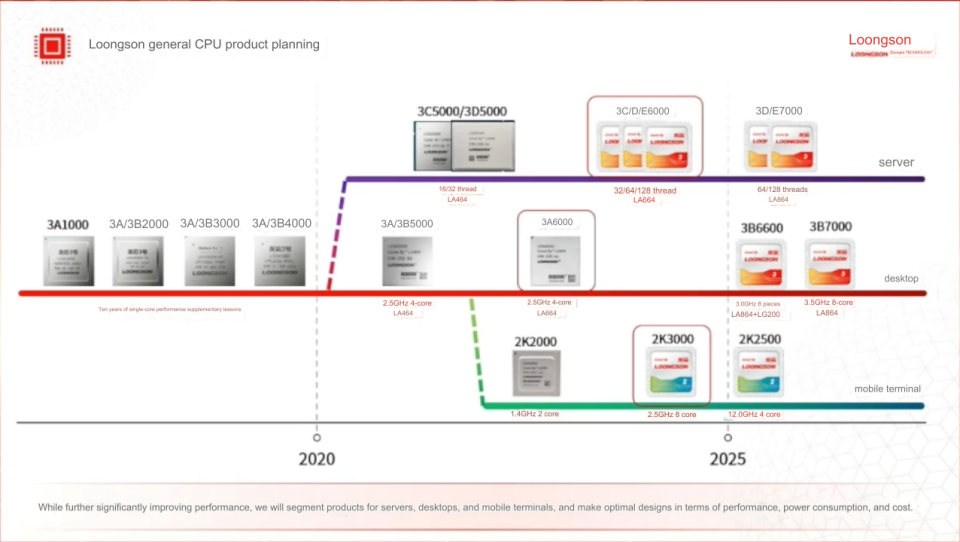
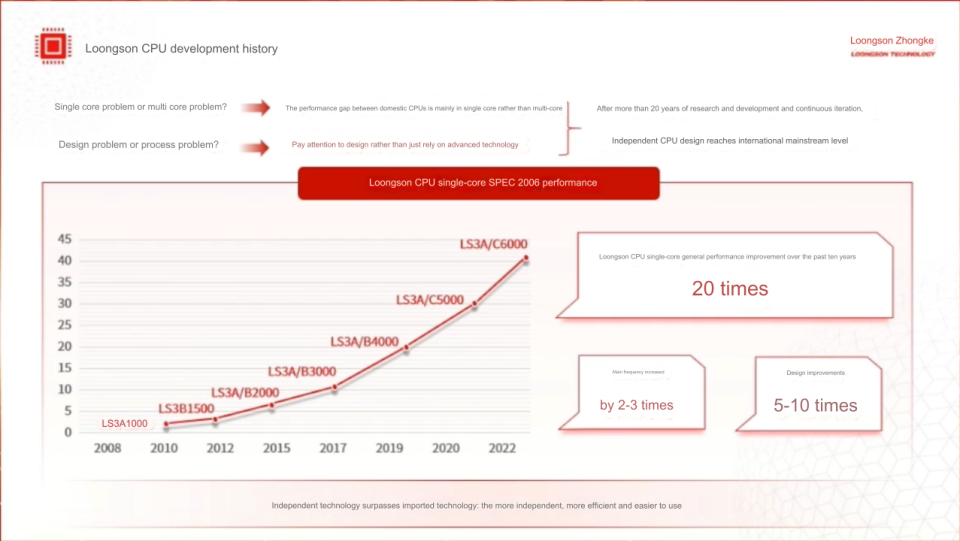
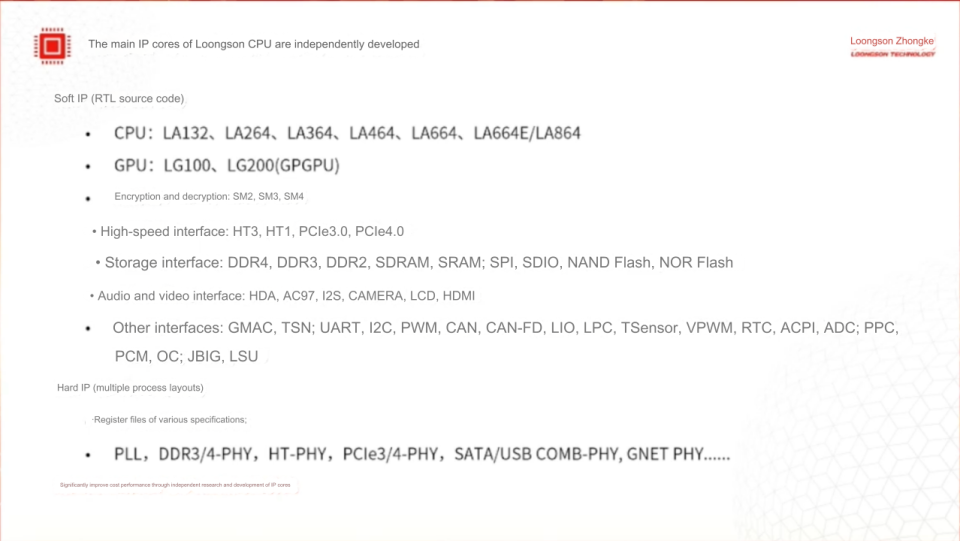
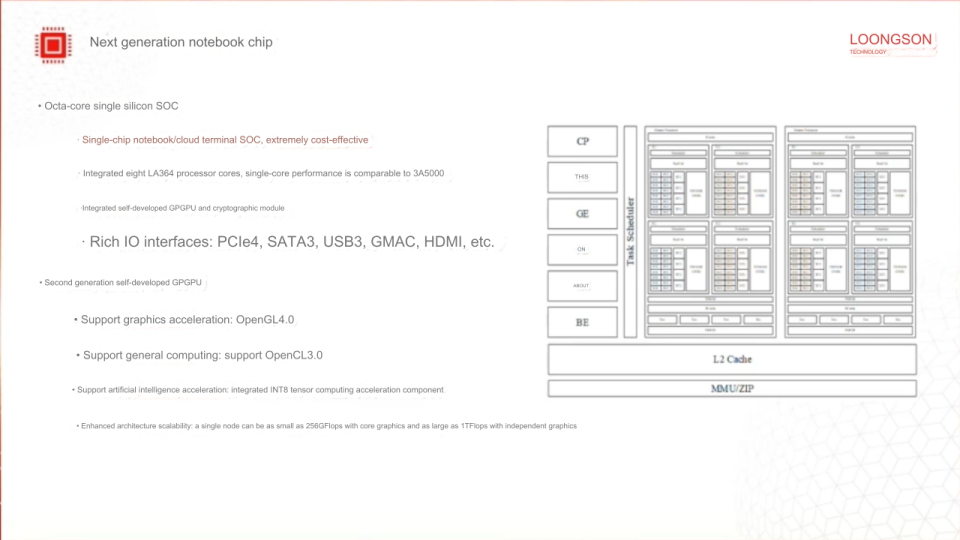
There is conflicting information presented in its slide: one shows these chips to be 'next-generation notebook chips,' while the roadmap shows both to be desktop processors. Time will tell. While these chips are made for the domestic market, one can't help but speculate about the possibility of seeing them retail in a country affected by the sanctions imposed by the US and the EU.
Loongson is ambitious to compete against x86 and ARM offerings with its 'Dragon' architecture. With China already blocking the use of Intel and AMD CPUs for its official government use and schools ordering domestically-made chips, Loongson will have a much larger share of the domestic market in multiple sectors. However, its success remains to be seen in its mainstream market.
The IPC comparison with the Loongson CPUs reminds me of Pat Gelsinger's comment about Chinese-made CPUs being decades behind. But with companies like Loongson making such progress, one wonders if the domestic chipmakers can close the gap sooner than ten years.
Making CPUs is easier said than done, but China has consistently imported chipmaking tools by hook or crook. The sanctions would be seen as a blessing in disguise for the Chinese chip production business in terms of market share and innovation. That said, Russia still has to achieve the same level of success with its chipmaking ventures.

